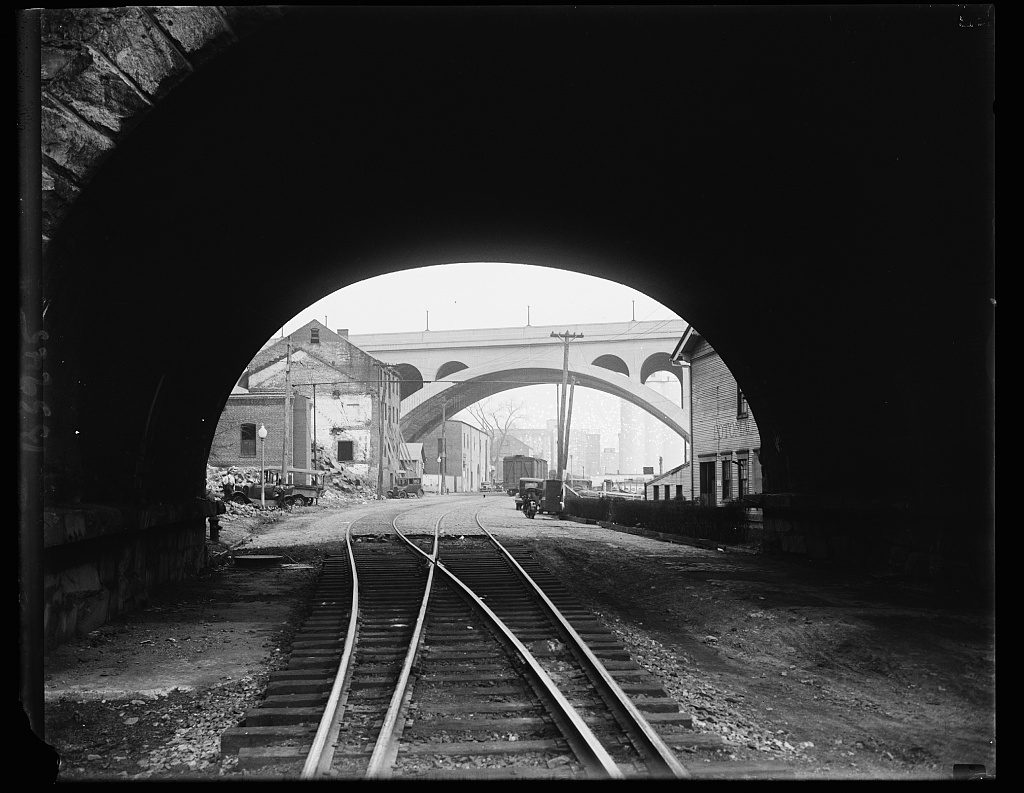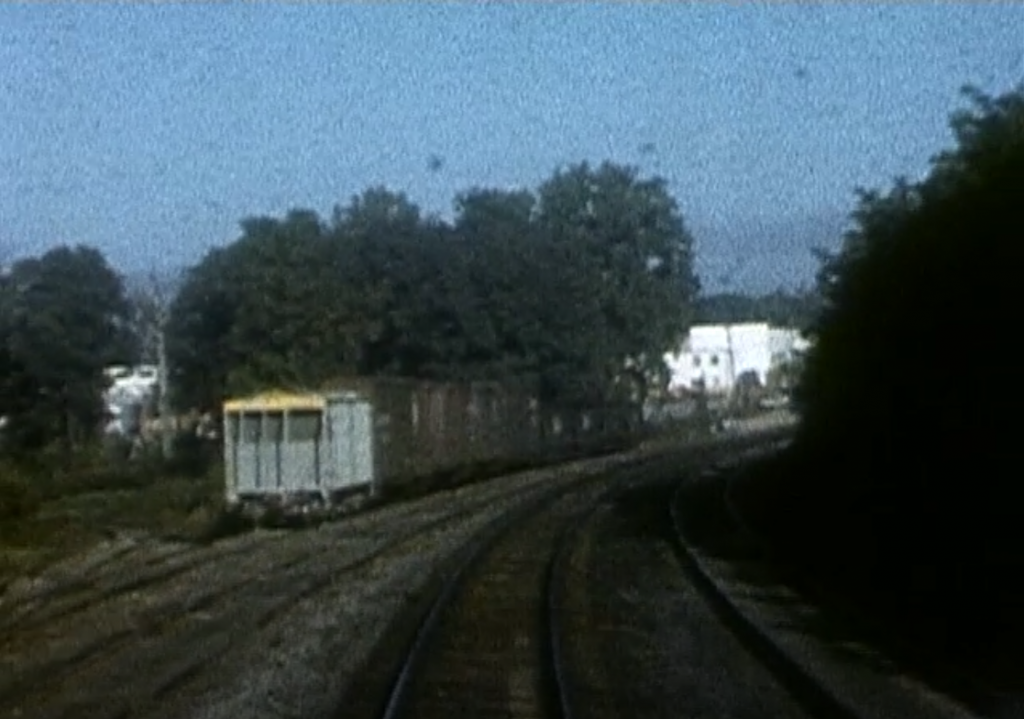Have been really making some great progress on the layout these last few weeks and it feels great. I last updated that I had got my DCC system up and running and after a little tweaking it is working flawlessly. I power up the system, turn the layout power on, open WiThrottle on my phone, acquire a loco and away I go! And on that note…
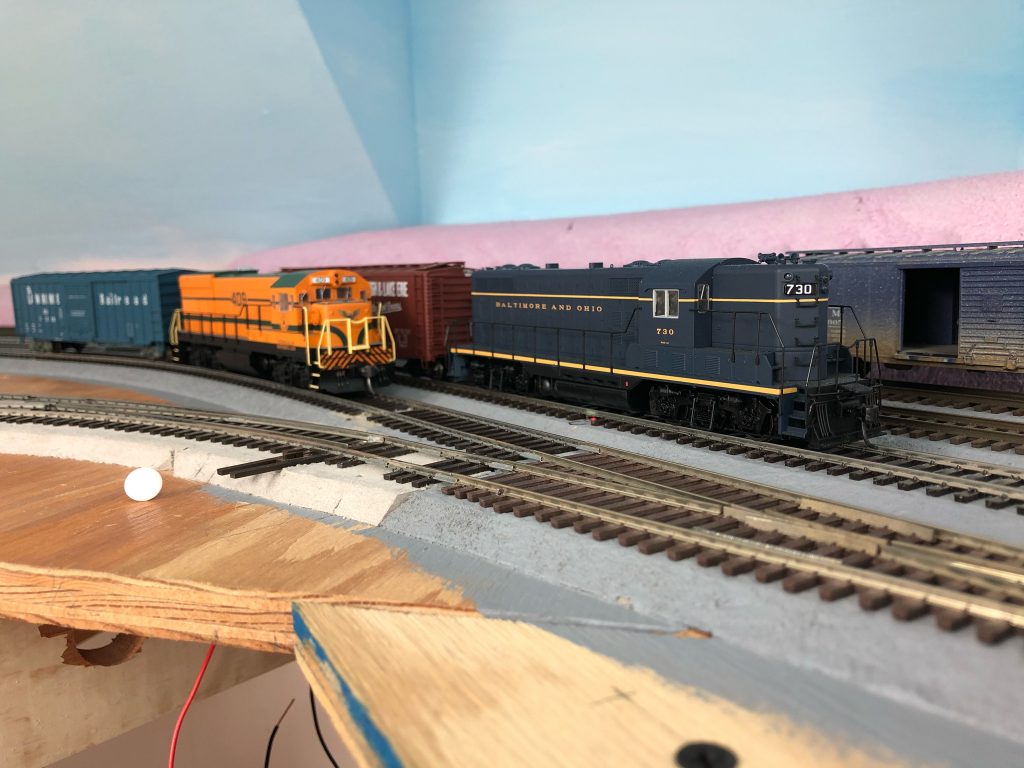
I’ve completed the Junction area as well as nearly all the trackage in the first section of the layout. Bus wires and feeders are in place and trains are running! There are a few trouble areas that I am working on- the biggest being the sharp curve leading from the Junction on to the branch. Not sure how I’m going to solve this but I’ll work on the major issues when I get closer to them. I can see my steam engines having a hard time negotiating that tight turnout. In the meantime, here’s more…
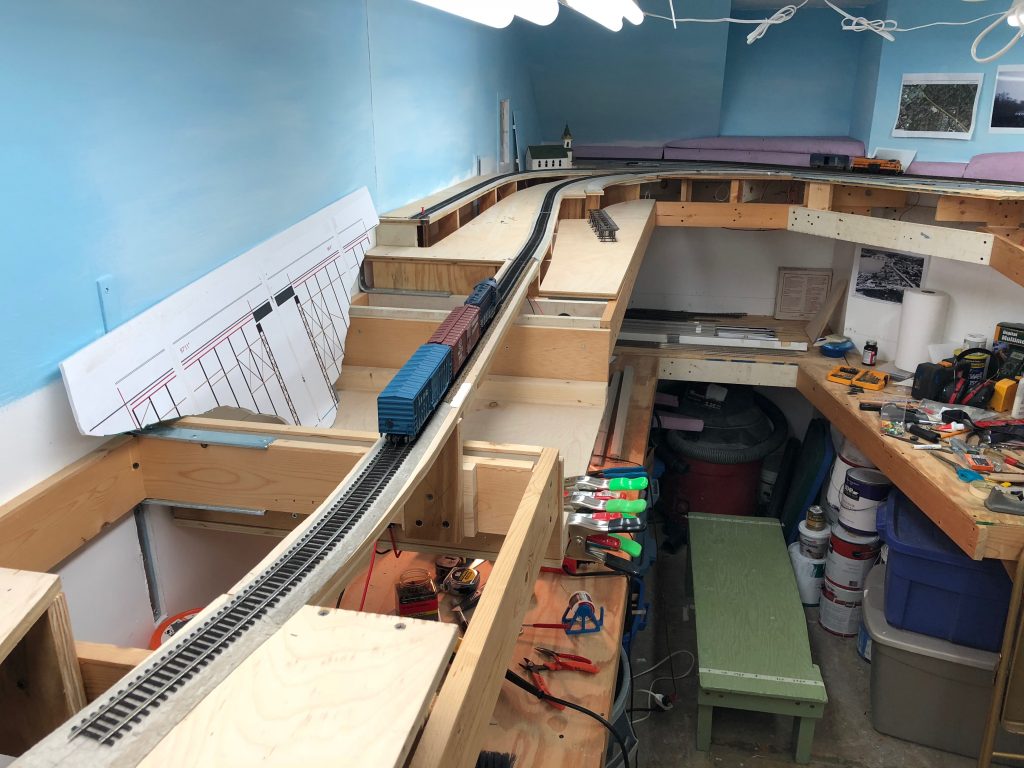
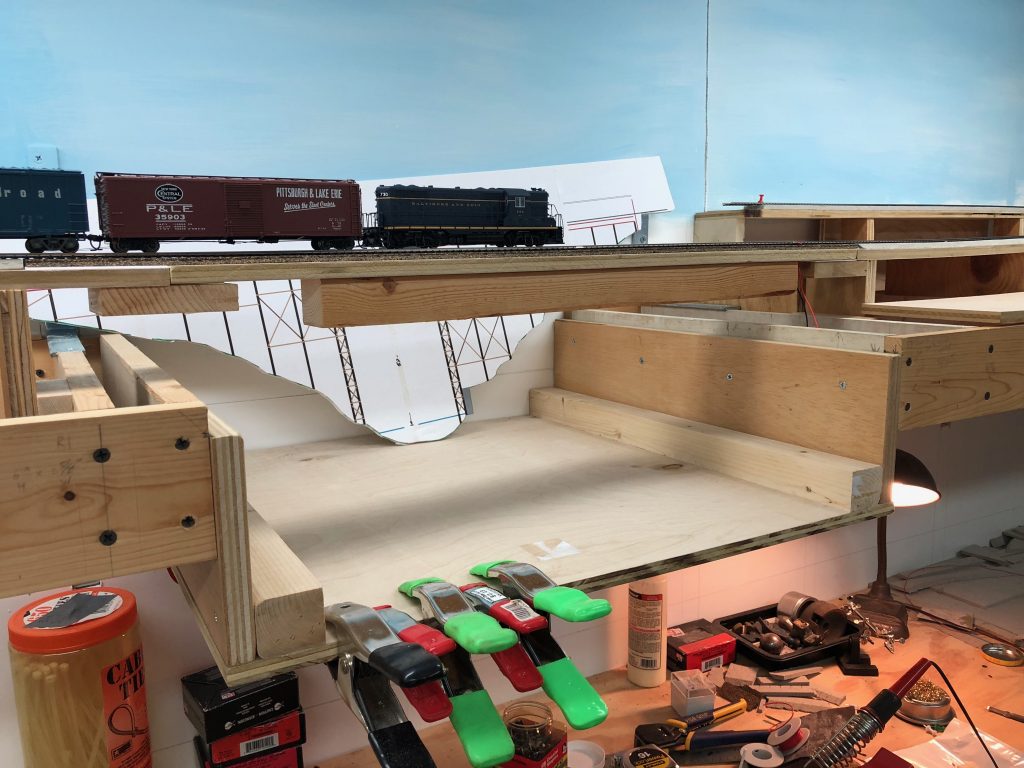
I created the temporary bridge from some plywood with an old 2×2 screwed to the bottom for rigidity. The bridge is easily removable with two wood screws. Feeder wires are screwed into a terminal block for easy removal. Right now track is laid semi-permanently on top of the bridge for operational purposes. Once I have the trestle model complete, I will “cut out” the old bridge and replace it with the model. Since that is far off, the temporary bridge is solid.
The drop down area is where the creek bed will be located. The trestle will be built to scale, an exact representation of the prototype as it stood in the 1940s.
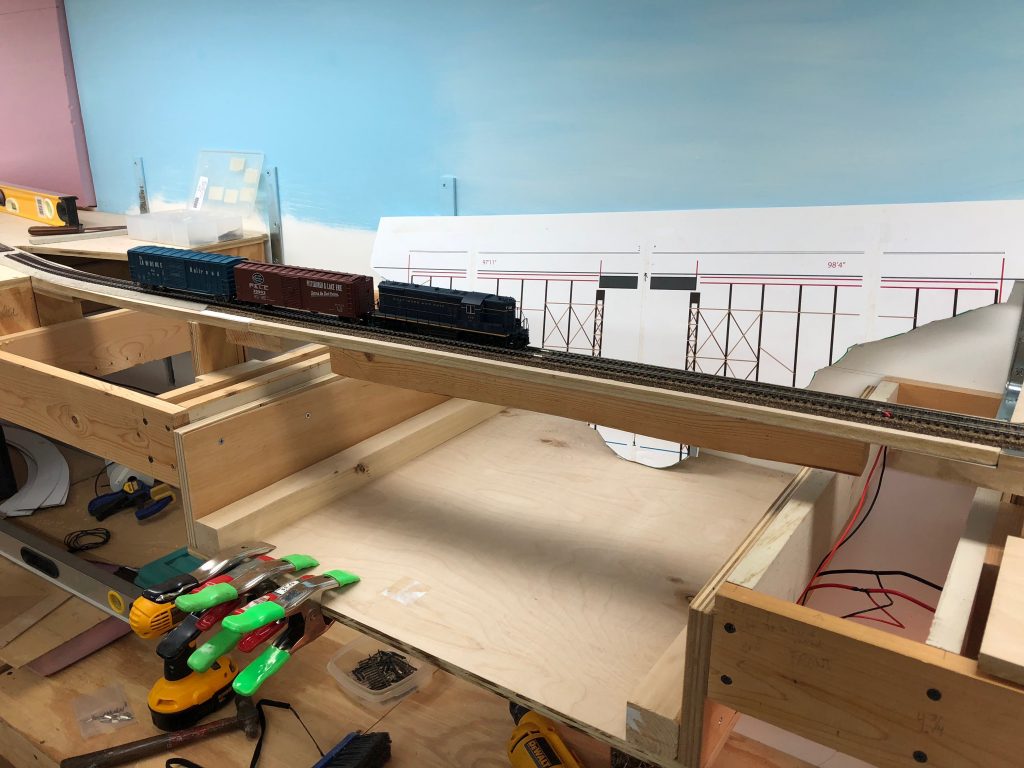
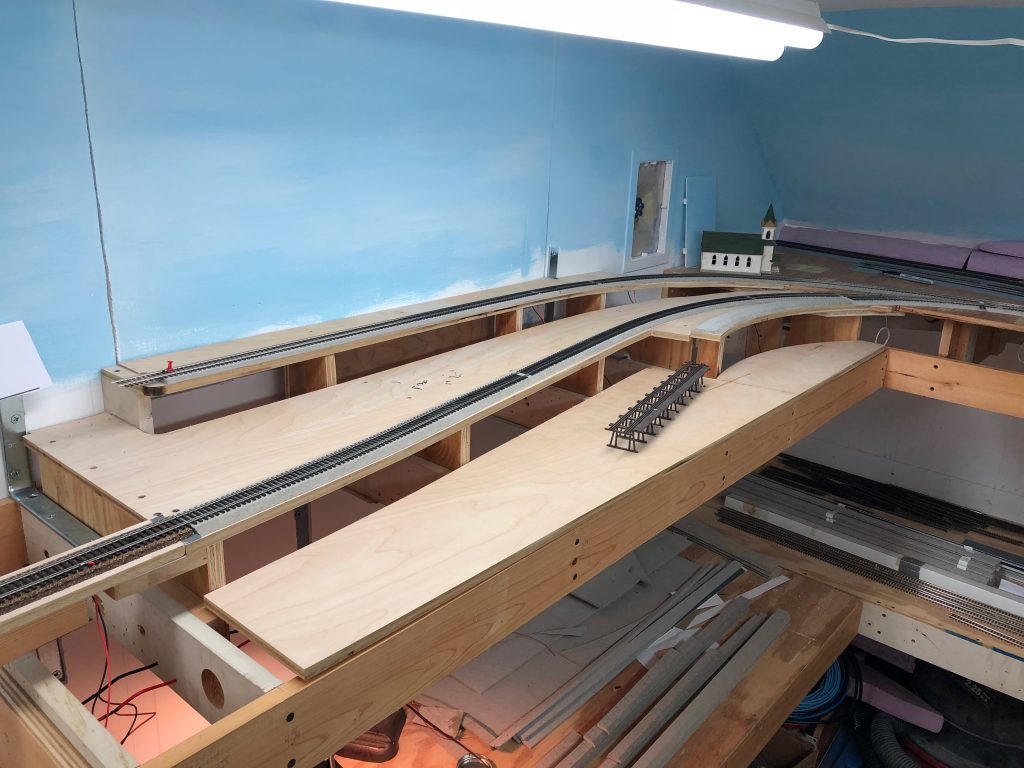
In this wide view you can make out the approximate location of the long coal trestle which will branch off from the main right after the junction. I really like how the re-worked grades turned out for the junction area. Originally I had the mainline up very high and it presented some real challenges down grade. My friend Matt helped to re-work the Junction completely. We spent a few hours looking at photos and studying maps to come up with the existing layout, which more realistically follows the prototype, where the Branch drops off quickly from the Metropolitan Branch mainline and is sunken between sidings. (E.C. Keys and the coal trestle) So far, everything is working smoothly. It feels great to make real progress. It feels even better to be able to run a locomotive on the layout! 🙂
Next up I’m going to continue track laying into Chevy Chase and on into Bethesda. If I stay on track, I should make my goal of completing all of the upper-deck track work before Christmas. 🙂
